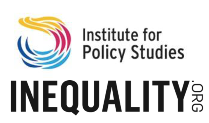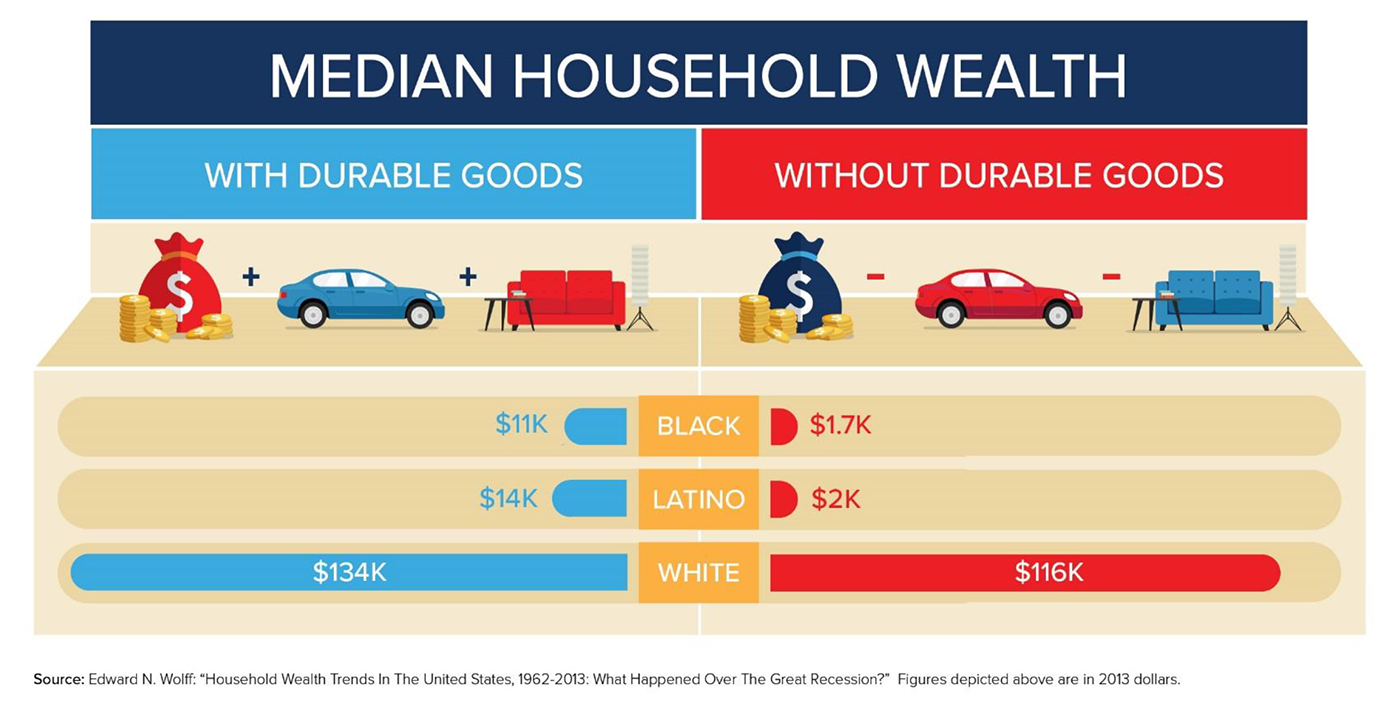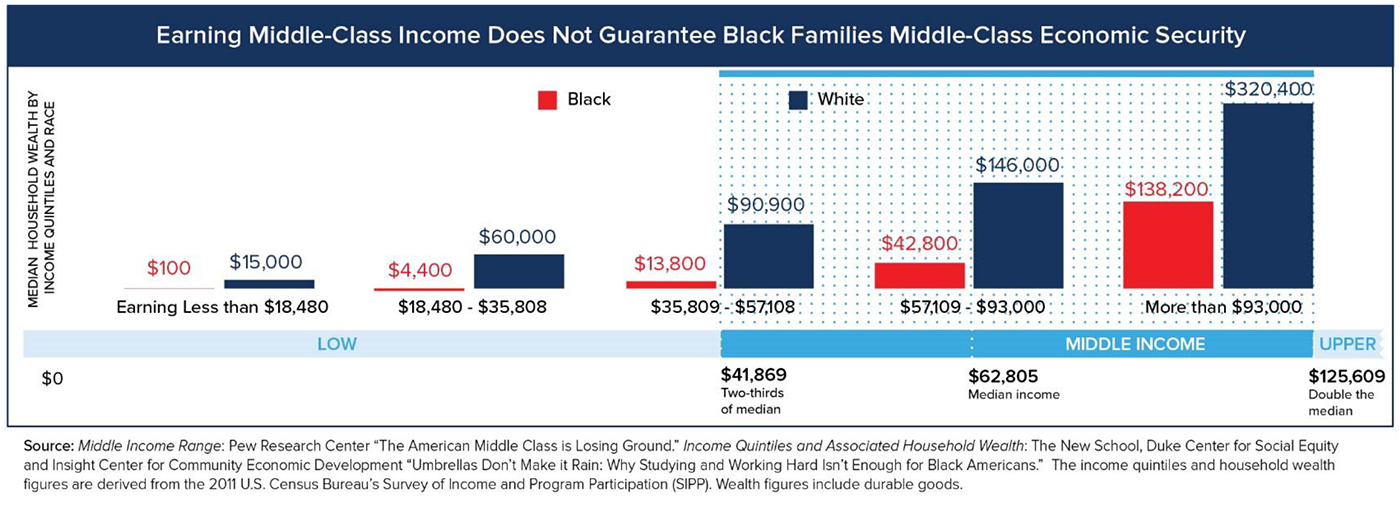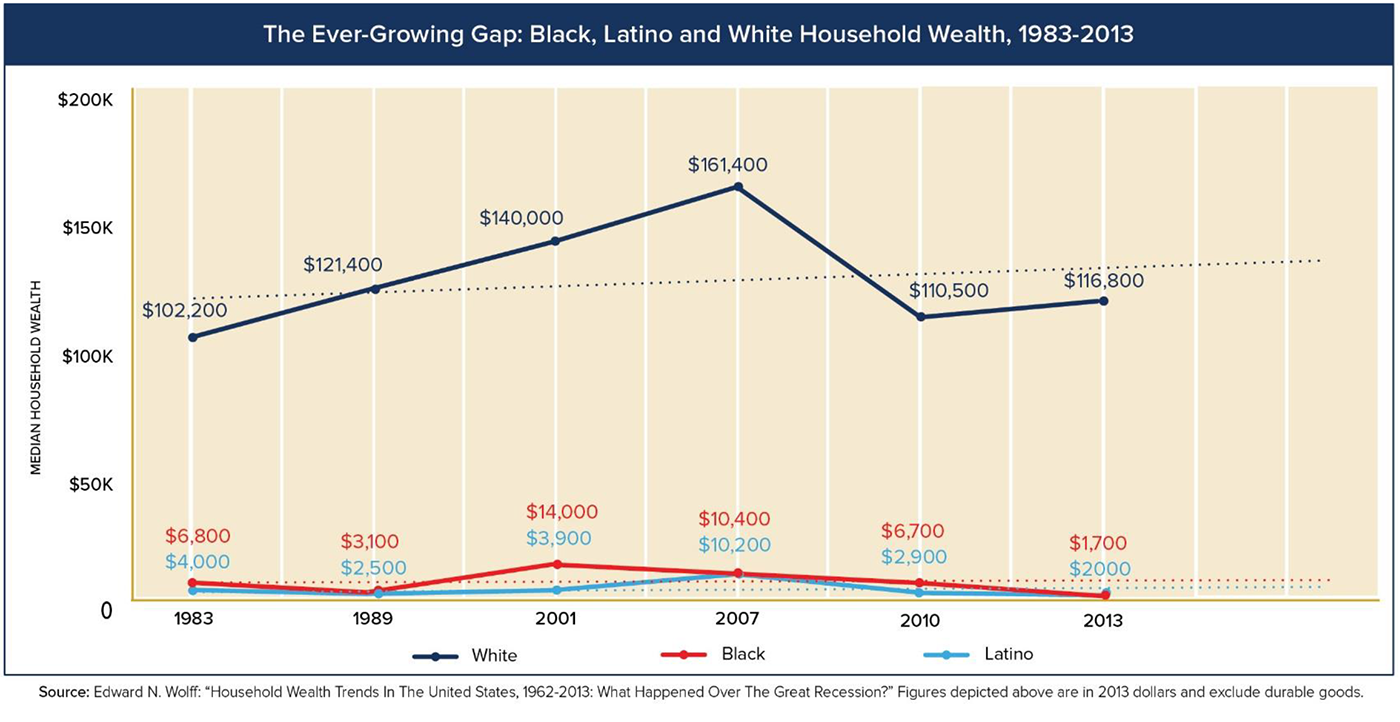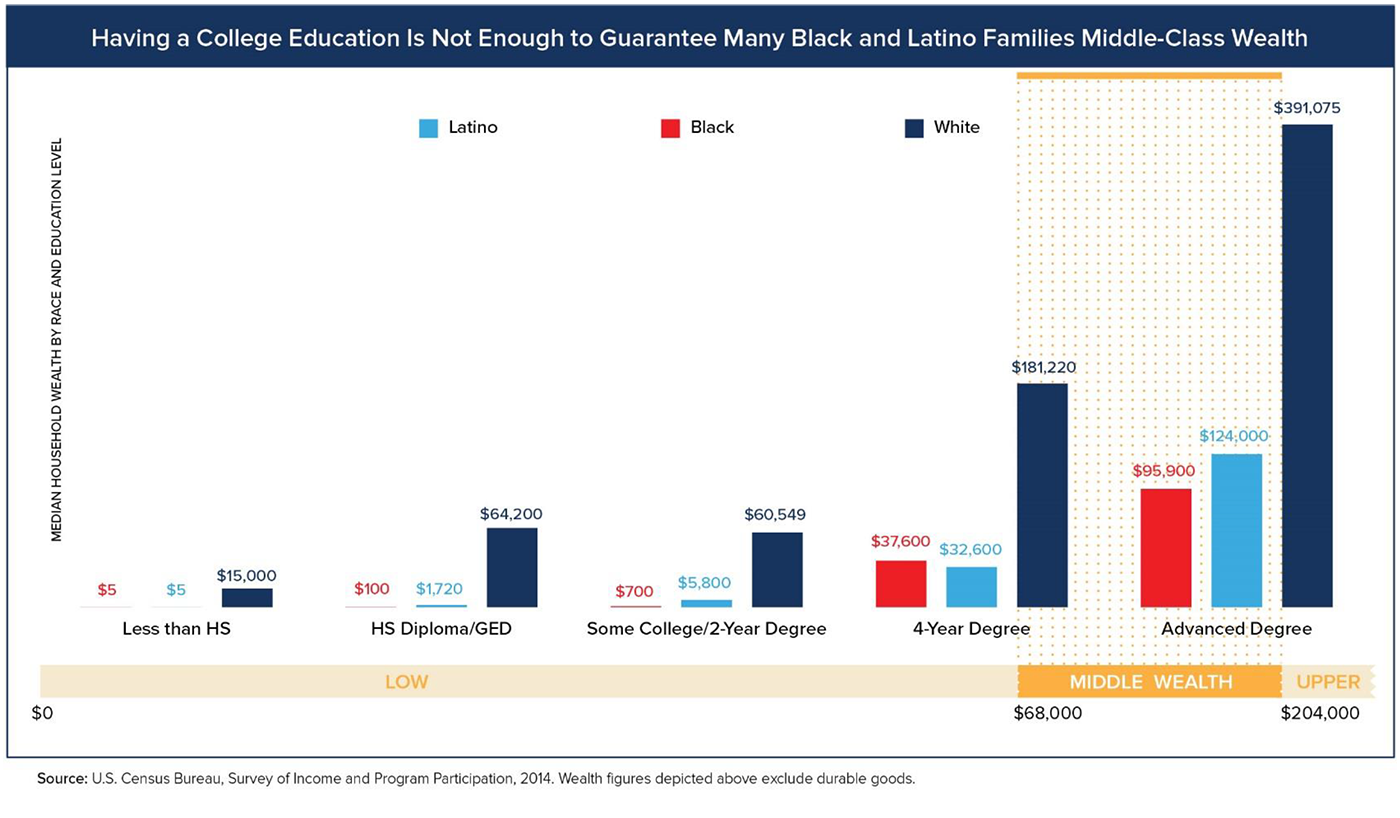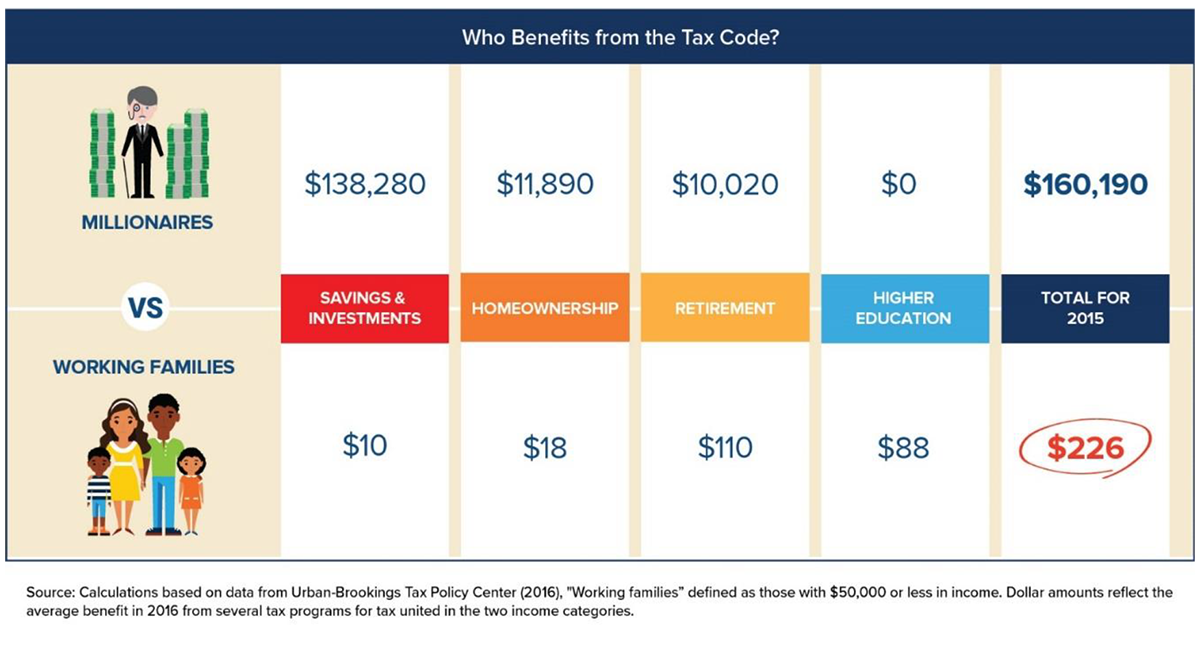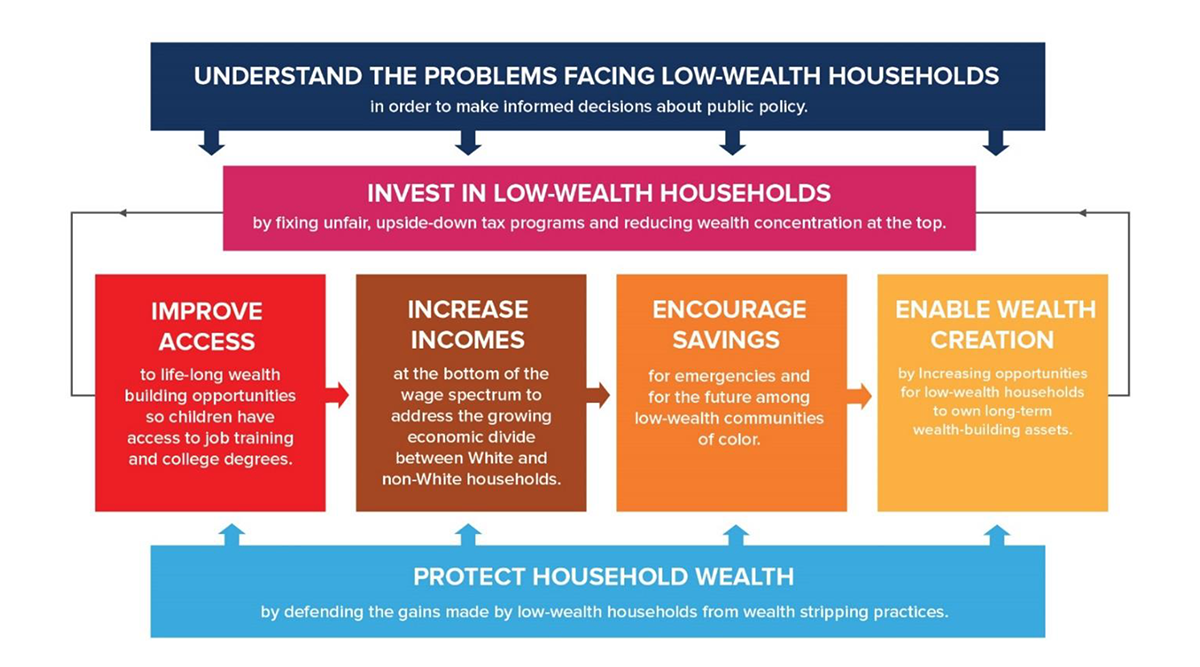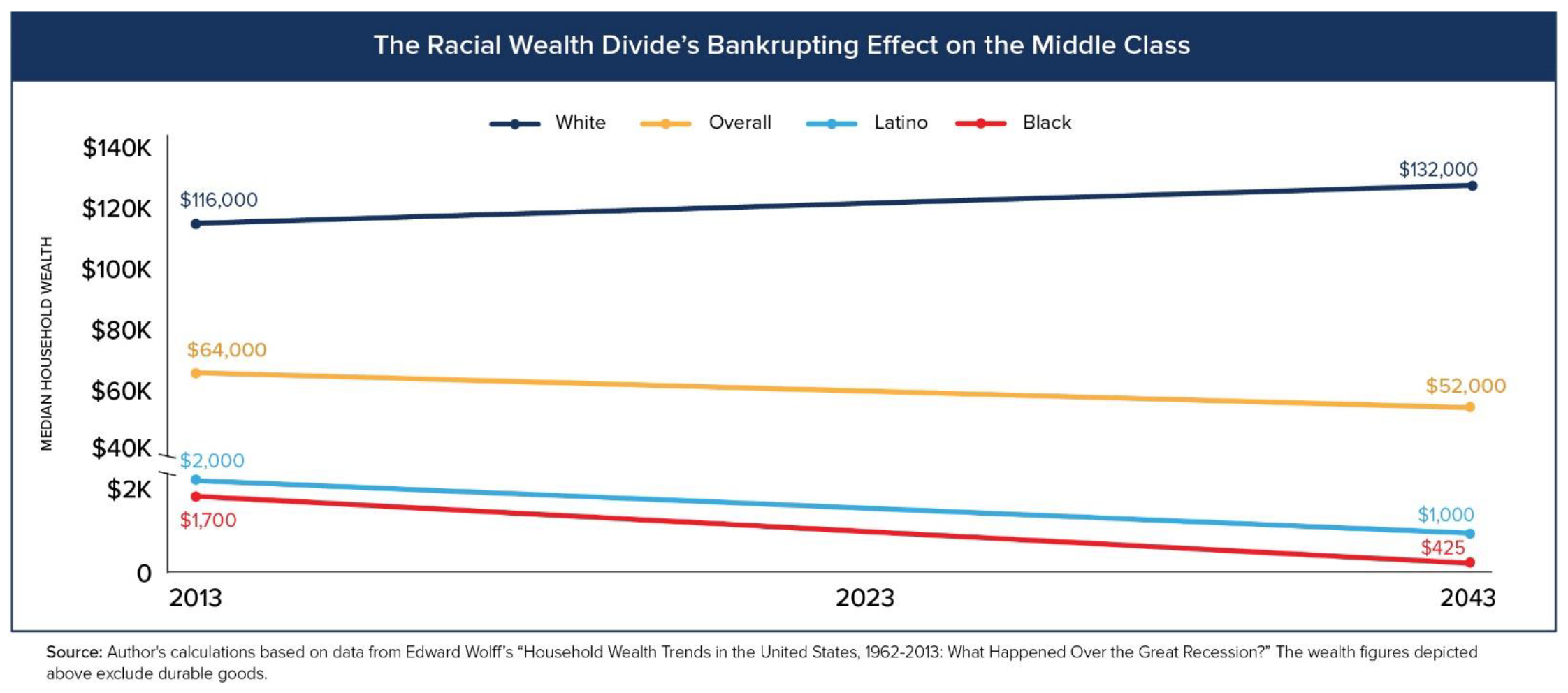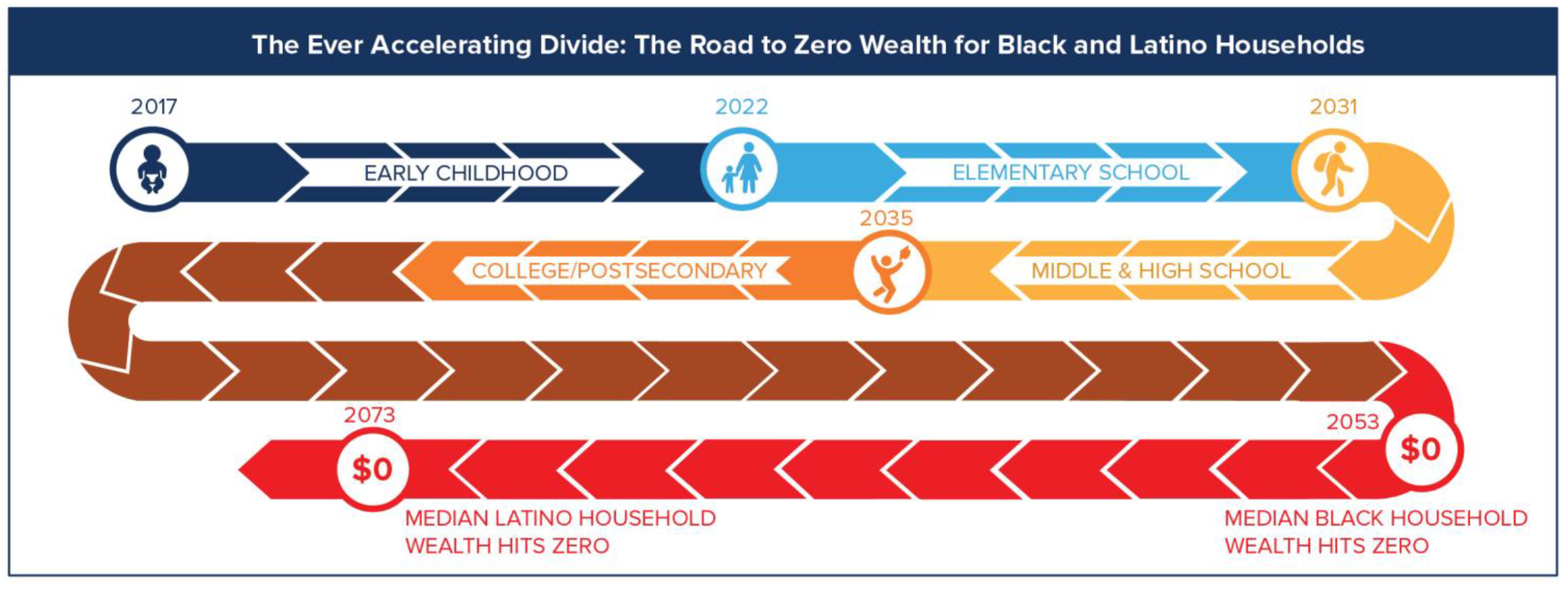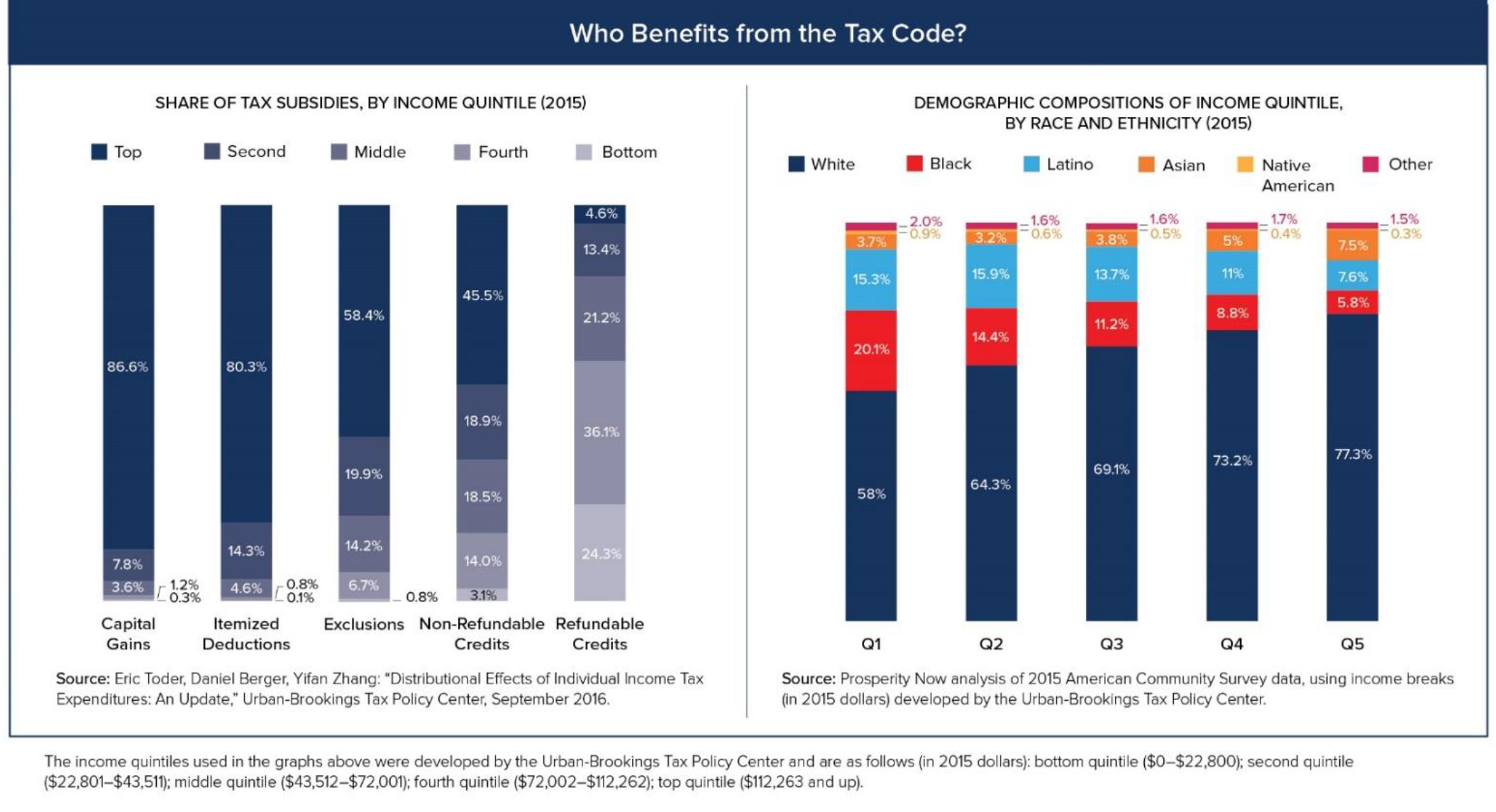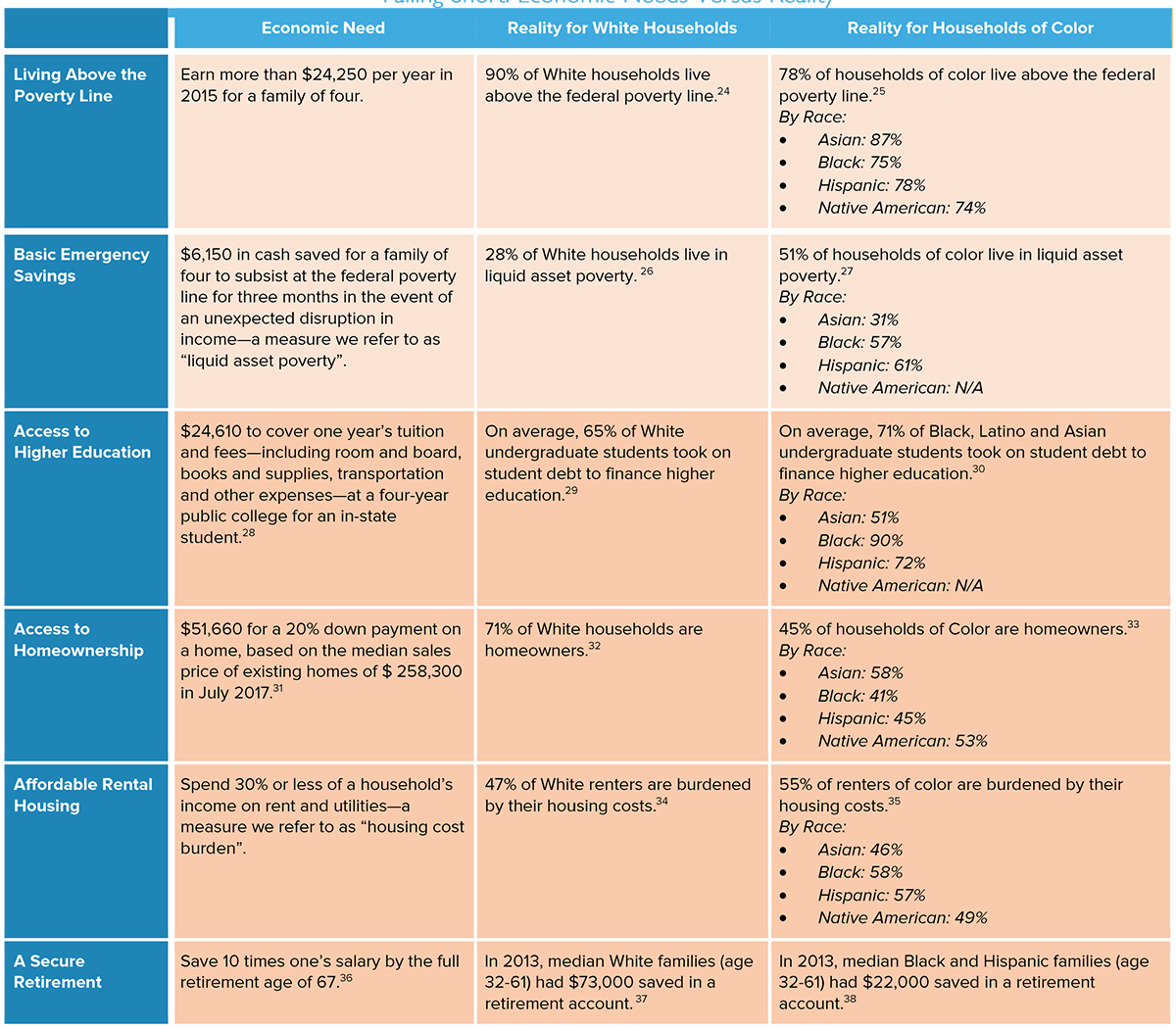The Project 2053 Mission is to Prevent The Road Zero Wealth for Black & Latino Families
In September 2017, The Institute for Policy Studies and Prosperity Now sounded an alarm across America when they published THE ROAD TO ZEROR WEALTH report.
The reports says if the racial wealth divide is left unaddressed and is not exacerbated further over the next eight years (by 2025), the median Black household wealth is on a path to hit zero by 2053—about 10 years after it is projected that racial minorities will comprise the majority of the nation’s population; median Latino household wealth is projected to hit zero twenty years later, or by 2073.
In sharp contrast, median White household wealth is projected to climb to $137,000 by 2053 and $147,000 by 2073.
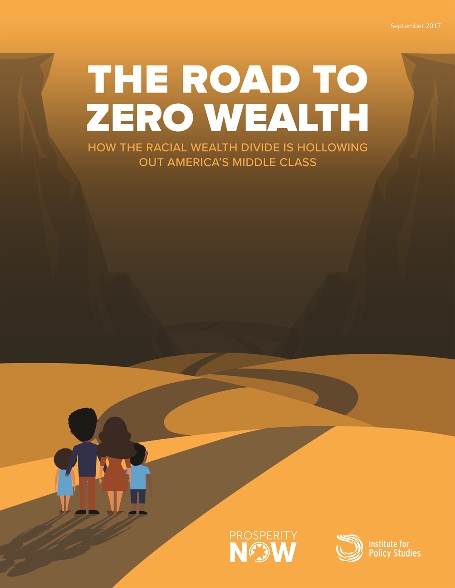
8 Key Findings From The Road To Zero Wealth Report
While Black and Latino families are expected to sustain significant losses in wealth in the next few decades, they are actually projected to hit zero wealth just ten years after people of color become the majority in the United States. If unattended, trends at the median suggest Black household wealth will hit zero by 2053. In that same period, median White household wealth is expected to climb to $137,000. The situation isn’t much brighter for Latino households, whose median wealth is expected to reach zero by 2073, just two decades after Black wealth is projected to hit zero. By this time, the median wealth of White households is projected to have reached $147,000.
Today (in 2017), the racial wealth divide in which the median net worth of Black and Latino families stands at just $11,000 and $14,000, respectively—a fraction of the $134,000 owned by the median White family. Even more disturbing is that when consumer durable goods such as automobiles, electronics and furniture are subtracted, median wealth for Black and Latino families drops to $1,700 and $2,000, respectively, compared to $116,800 for White households.
Current trends suggest that by 2024, median Black household wealth will have declined by a total of about 30% from where it stands today (in 2017). In that same timeframe, the median Latino family can expect to see their net worth decline by a total of 20% over today’s levels. By then, median White household wealth will have increased by about five percent over today’s levels. Overall, this dizzying decline in Black and Latino household wealth would mean that seven years from now, median Black and Latino households would own 60-80% less wealth than they did in 1983. Put differently, by the end of the next presidential term (in January 2025), median White households would own 99 and 75 times more wealth, respectively, than Black and Latino households. By then, the racial wealth divide will have increased by more than $6,000 from where it stands today.
Earning a middle-class income does not guarantee middle-class economic security. White households in the middle-income quintile (those earning $37,201-$61,328 annually) own nearly eight times as much wealth ($86,100) as middle-income Black earners ($11,000) and ten times as much wealth as middle-income Latino earners ($8,600). This disconnect in income earned and wealth owned is visible across the entire income spectrum between these groups.
If the middle class were to be defined by wealth rather than by income, Black and Latino families in the middle-income quintile would need to earn 2-3 times as much as White families in order to enter the middle class. If we were to define the middle class in terms of wealth, households would need to own between $68,000-$204,000 in wealth to qualify for the middle class. Under these terms, only Black and Latino households in the highest income-quintile (those earning more than $104,509) would qualify for middle-class status or higher, compared to White households in the top three income-quintiles who already own wealth in excess of this threshold. In fact, only Black and Latino households with an advanced degree have enough wealth to be considered middle- class, whereas all White households with a high school diploma or higher would be considered middle class.
Defining class in terms of wealth instead of income, roughly 70% of Black and Latino households would fall below the $68,000 threshold needed for middle-class status, whereas only about 40% of White households would fall below the middle class. In contrast, roughly 13% of Black and Latino households could be considered to have “upper-wealth” (meaning they own at least $204,000 in wealth), compared to 40% of White households.
The accelerating decline in wealth over the past 30 years has left many Black and Latino families unable to reach the middle class. Between 1983 and 2013, the wealth of median Black and Latino households decreased by 75% (from $6,800 to $1,700) and 50% (from $4,000 to $2,000), respectively, while median White household wealth rose by 14% (from $102,200 to $116,800). If current trends continue, by 2020 median Black and Latino households stand to lose nearly 18% and 12%, respectively, of the wealth they held in 2013. In that same timeframe, median White household wealth would see an increase of 3%. Put differently, in just under four years from now, median White households are projected to own 86 and 68 times more wealth than Black and Latino households, respectively.
By 2024, median Black and Latino households are projected to own 60-80% less wealth than they did in 1983. By then, the continued rise in racial wealth inequality between median Black, Latino and White households is projected to lead White households to own 99 and 75 times more wealth than their Black and Latino counterparts, respectively.
Charts & Graphs From The Road To Zero Wealth Report
Download The Full 36 Page Road To Zero Wealth Report
Virtual Workshop




